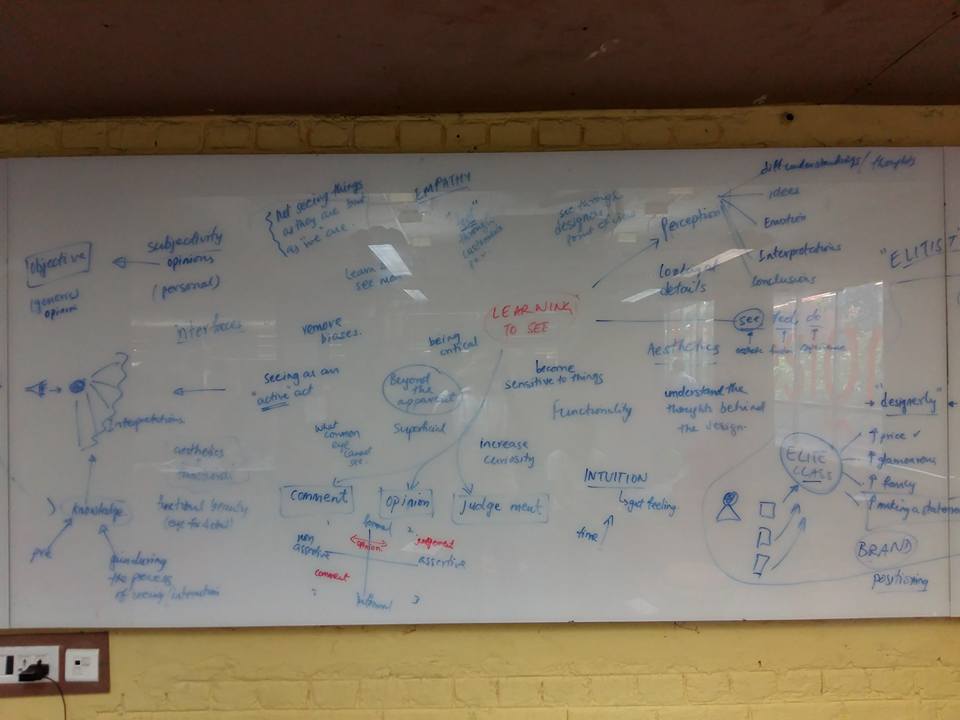A few weeks ago (last month to be precise) I was a part of a panel discussion at the UX India 2015 conference called Industry-Academia Fusion. The panelists were people from the Industry and Academia. There were a lot of discussions, deliberations and talking about the situation as it stands. It was a very interesting discussion, that brought upon many points that were critical to Design Education in India. As someone who has spent quite a few years in the industry and then moved to the academia, I have been able to understand both perspectives and am often voicing my opinions from different sides.
A common concern amongst many people who hire designers, is that the quality of students graduating is not adept, or the industry has to train them on certain skills before they could get onto a project. Why is this so? Is it even a justified demand from the industry?
If we look at the early days of UX in India, there was always a certain amount of time given to fresh graduates to adapt the needs of the industry. A lot of the managerial people in the UX would not come from formal studies in UX, for the field did not exist then. It is only over the past 10 years that the discipline has seen more graduate programs being offered. The demand side has risen considerably too.
Industry lead academia or academia led industry
A question that I am often found discussing with my peers is whether industry has become impatient or has the academia started to just fulfil the ‘demand’ of the industry? So the classic question then follows : Should the Industry lead the academics or should the academics lead the industry? You could be a proponent of either of the thought, but it is something that is currently at the helm of how design is taught at the institutes today.
If you look at business schools they follow the former, whereas traditionally design schools have followed the later.
But with the rise in “live projects”, internships, industry projects, placements driven curriculum, it is almost as if the notion of Design education is getting limited to precisely what the industry wants.
A good example given by panelist was that of the US where a lot of the Academic research was used by industry to progress. Which meant that it was the academia leading the industry. It was here that the industry would set up research centres in colleges to new technology, research, innovation etc and then use that research to come up with industry ready products.
In India, however the notion of research itself is not very prominent. Design schools are hardly encouraged to work on research. The culture of research is non-existent. Very few research papers get written. One way of changing that should be to encourage all faculty to write papers, articles and get involved in research. That is the true value quotient of any school.
It is well known and should be clear that design education cannot adopt the same ways of working as an engineering or management education. So it can therefore never be the about the numbers and having too many students at a point of time. Design education is different because one has to pay special attention to the individual learning capacities. Someone could be a fast learner, someone could learn slowly. Courses need to be ‘designed’ in a manner that it encourages the learning.
Speaking of learning, schools and colleges today need to rebuild themselves as centres of learning and not as training centres. While training is a short term thing, learning is a life-long process.
Academia and Industry should be different but work together
Even though there exists some difference in both, it is important that the academia and industry work together on certain aspects. Design education has multiple aspects to it.
It is important to understand on what parameters are the graduates evaluated when they are interviewing for jobs or pitching for projects. As a good design school, it should be imperative that there is ample focus on these to prepare someone better for the industry. One is the skill building (which is often evaluated by the portfolios of designers), second is the creativity quotient (which is evaluated by how innovative the designs are) and third is the critical thinking (which is hardly given importance during recruitment).
How does the Industry engage with academia
A common misconception with the people from industry is that the only way someone can get associated with the academia is to teach by giving up your job. Well, if they were doing that, then the role of the academics would be lost. There are other ways in which one can engage with the academia. I am mentioning a few of them.
- Intensive workshops on topics that are contemporary and relevant (Demand full attention of students by not having classes parallely)
- Float Long projects that the students can work on with the faculty at the Design School. (Make sure you pay the school for their efforts on this. Make your intentions clear when it comes to what you are going to do with the final results? Will the student and school also have any role to play in the IP that is created through the project ? Who owns the IP?
- Take guest lectures highlighting the work at the companies and its success by design
- Float short term projects (always engage in short-term projects first before a long project
- Hire students as interns (make it a compulsory part of your company)
- Find time to give back to Design colleges by mentoring students and making them aware about Design professionalism.
I would love to hear more from you on how you can encourage the industry and academia to create better learning experiences for the students.


